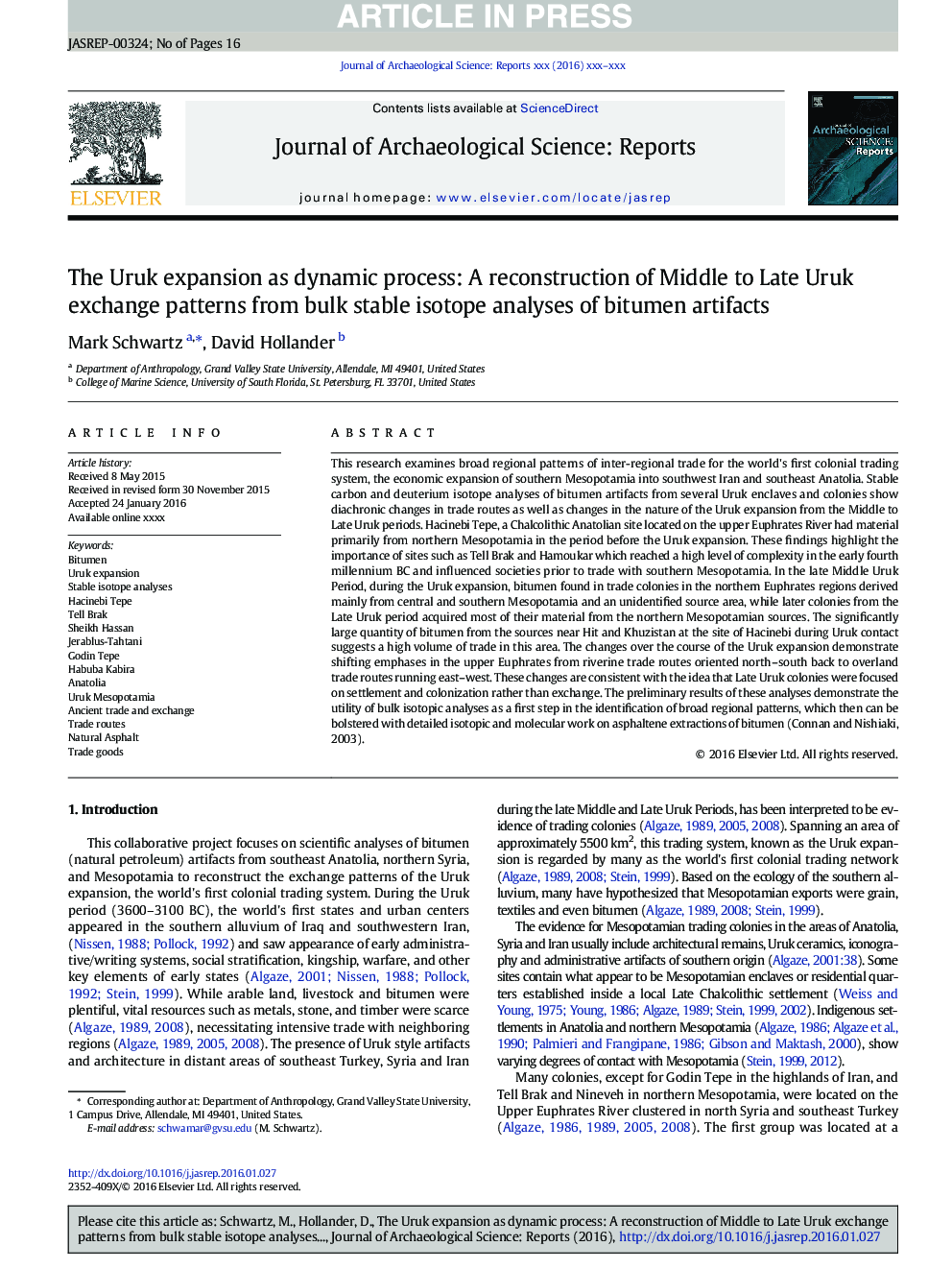| کد مقاله | کد نشریه | سال انتشار | مقاله انگلیسی | نسخه تمام متن |
|---|---|---|---|---|
| 7445999 | 1483936 | 2016 | 16 صفحه PDF | دانلود رایگان |
عنوان انگلیسی مقاله ISI
The Uruk expansion as dynamic process: A reconstruction of Middle to Late Uruk exchange patterns from bulk stable isotope analyses of bitumen artifacts
ترجمه فارسی عنوان
گسترش اوراک به عنوان فرآیند پویا: بازسازی الگوهای مبادله میانه تا عقب از تجزیه و تحلیل ایزوتوپ پایدار مصالح ساختاری قیر
دانلود مقاله + سفارش ترجمه
دانلود مقاله ISI انگلیسی
رایگان برای ایرانیان
موضوعات مرتبط
علوم انسانی و اجتماعی
علوم انسانی و هنر
تاریخ
چکیده انگلیسی
This research examines broad regional patterns of inter-regional trade for the world's first colonial trading system, the economic expansion of southern Mesopotamia into southwest Iran and southeast Anatolia. Stable carbon and deuterium isotope analyses of bitumen artifacts from several Uruk enclaves and colonies show diachronic changes in trade routes as well as changes in the nature of the Uruk expansion from the Middle to Late Uruk periods. Hacinebi Tepe, a Chalcolithic Anatolian site located on the upper Euphrates River had material primarily from northern Mesopotamia in the period before the Uruk expansion. These findings highlight the importance of sites such as Tell Brak and Hamoukar which reached a high level of complexity in the early fourth millennium BC and influenced societies prior to trade with southern Mesopotamia. In the late Middle Uruk Period, during the Uruk expansion, bitumen found in trade colonies in the northern Euphrates regions derived mainly from central and southern Mesopotamia and an unidentified source area, while later colonies from the Late Uruk period acquired most of their material from the northern Mesopotamian sources. The significantly large quantity of bitumen from the sources near Hit and Khuzistan at the site of Hacinebi during Uruk contact suggests a high volume of trade in this area. The changes over the course of the Uruk expansion demonstrate shifting emphases in the upper Euphrates from riverine trade routes oriented north-south back to overland trade routes running east-west. These changes are consistent with the idea that Late Uruk colonies were focused on settlement and colonization rather than exchange. The preliminary results of these analyses demonstrate the utility of bulk isotopic analyses as a first step in the identification of broad regional patterns, which then can be bolstered with detailed isotopic and molecular work on asphaltene extractions of bitumen (Connan and Nishiaki, 2003).
ناشر
Database: Elsevier - ScienceDirect (ساینس دایرکت)
Journal: Journal of Archaeological Science: Reports - Volume 7, June 2016, Pages 884-899
Journal: Journal of Archaeological Science: Reports - Volume 7, June 2016, Pages 884-899
نویسندگان
Mark Schwartz, David Hollander,
